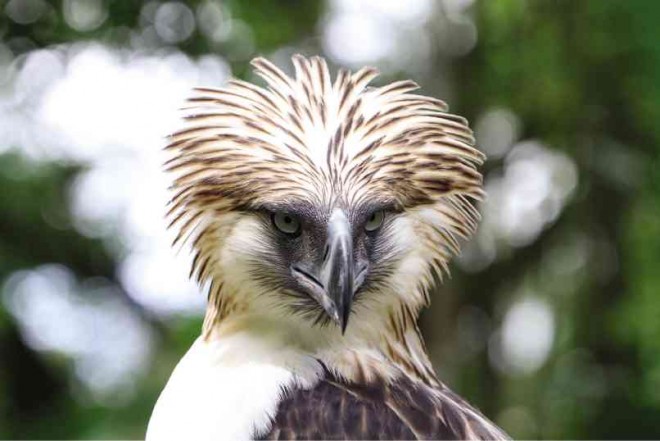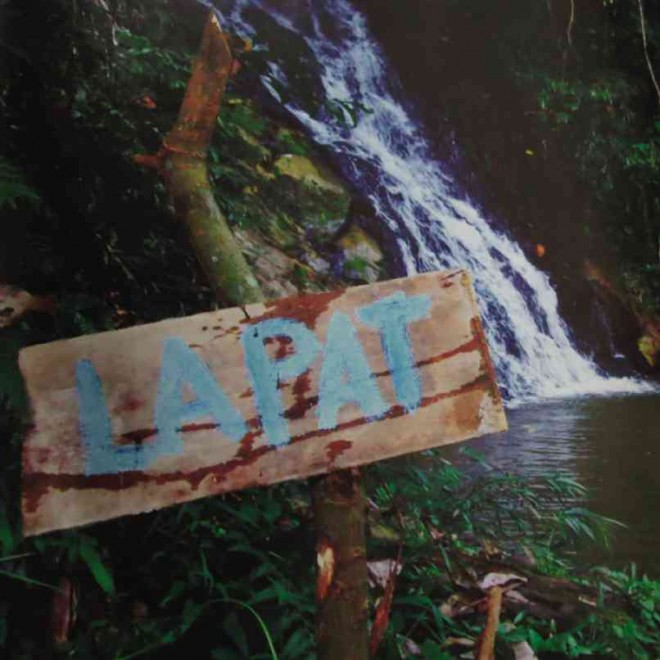Apayao beliefs, tradition assure PH eagle survival

MINDANAO, a male Philippine eagle at the Philipine Eagle Center in Davao City, was hatched at the center in December 2001. LYN RILLON
AN INDIGENOUS practice to honor and give respect to a departed family member of the Isnag tribe in Apayao has played a key role to preserve the local environment and natural resources, making this little known province in the Cordillera the newest home of the Philippine eagle (Pithecophaga jefferyi).
Through the “lapat” (which means prohibited or off-limits), a customary belief that the Isnag people have been practicing for generations, a specific area is designated by community members as sacred. This public declaration happens after the death of its owner or occupant, making an area off limits to the public, including immediate family members.
Once declared as lapat, nobody can enter this property-—be it a portion of a house, a river, a mountain or a forest where the deceased frequently stayed in his lifetime.
Jovie Balag-Gaspar, a resident of the village of Malibang in Pudtol town, describes the lapat system as a show of love and respect to a
departed Isnag family member.
Allan Gobrin, a teacher and a former employee of the Apayao tourism office who studied indigenous practices, says trespassers face severe penalties, including getting cursed by the spirit of the dead.
“He or she will be subjected to ‘awat,’ the Isnag’s tradition of punishing trespassers by inviting them to a dialogue with elders and making them pay for damages. [Trespassers] are asked to butcher any four-legged animal or give an amount that would satisfy the demands of the bereaved family,” says Gobrin.
The towns of Pudtol, Calanasan and Kabugao are inhabited mostly by Isnag people. Most of the upland villages practice the lapat system, which reinforces the government’s environment protection and management program.
Mourning period
Gobrin says the declaration of the lapat area marks the beginning of mourning period among the dead’s immediate family members.
For some, the declaration of lapat and putting signage marked with “Lapat” in every corner of a fenced property or a public domain has sown fear among outsiders, due to the belief that spirits guard the area and the fear that desecrating it would invite curse or penalty.
Ellah Dodoc Balawag, a Pudtol native, recalls that in the old days, a violation of lapat may even cost one’s life, depending on the gravity of the offense or on what the council of elders may decide.
“Of course, everybody would follow out of fear or shame. Most importantly, we abide by the rules because of our respect to the departed,” she says.
Recognizing the importance of this indigenous practice in enforcing rules, the Apayao provincial board incorporated the lapat system in the province’s environment code in 2013. The code was passed to support Republic Act No. 9147 (Wildlife Resources Conservation and Protection Act) and protect the rare Philippine eagle that the Philippine Eagle Foundation (PEF) and the Department of Environment and Natural Resources (DENR) confirmed to be thriving in the Cordillera mountains.
Active eagle nest
Apayao welcomed the recent discovery of an active Philippine eagle nest in the province’s largest lowland forest in Sitio Salagunting, Eva Garden village in Calanasan.
“Indeed, it takes political will to preserve our natural habitat,” says Vice Gov. Hector Pascua.
The seven Apayao towns, Pascua says, are consolidating their forest land use plans to preserve the province’s remaining virgin forests as a critical habitat of endangered flora and fauna. This would also ensure the protection of wildlife and help maintain a balanced ecology in Apayao, which is home to more than 112,600 people.
In 2011, a group of antilogging and antimining advocates in Apayao urged the government to implement a total log ban to prevent further degradation of Apayao’s forests, where logging concessionaires used to operate.

A SIGNAGE indicates that this waterfall in Apayao is under “lapat” and is off limits to community members and visitors. PHOTO FROM THE 2015 BOOK, “VOICES FROM THE CORDILLERAS: GUARDIANS OF THE FOREST, STEWARDS OF THE LAND”
More sightings
In the same year, DENR and PEF confirmed several sightings of the Philippine eagle in Calanasan. A year later, more sightings were recorded in at least two areas in Mt. Lambayo in Pudtol, and in Mt. Asi in Kabugao.
In 2010, the Calanasan town government placed at least 25,000 hectares of its forests under the lapat system.
For a giant raptor like the Philippine eagle, it takes about 13,000 ha of untouched forests as its exclusive territory, prompting the Apayao government to draft a long-term plan to ensure that this natural heritage is preserved for generations.
The San Roque Power Corp. (SRPC) in Pangasinan province has been funding a research and conservation project for the Philippine eagle in the Cordillera mountains in the last four years.
Tom Valdez, SRPC vice president for corporate social responsibility, says the company has donated P3 million for the project and is set to donate another P1 million this year.
The project began in September 2011 when Ryukichi Kawaguchi, then SRPC president, and Dennis Salvador, PEF executive director, agreed to work on a Philippine eagle restoration program within the Agno River watershed.
“In this project, we wanted to make the national bird a rallying point for the rehabilitation and protection of our watershed, which covers 9,550 ha of forest in the Cordillera mountains in the provinces of Benguet and Pangasinan,” says Valdez.
In November 2011, a team from PEF, SRPC and DENR saw an eagle perched on a tree top in Mt. Mamukaw in Calanasan. The discovery shattered a biologist’s assertion in the 1960s that Philippine eagles, which thrive in Mindanao, could not survive in the Cordillera mountains because of its elevation and vegetation. With a report from Gabriel Cardinoza in San Manuel, Pangasinan














